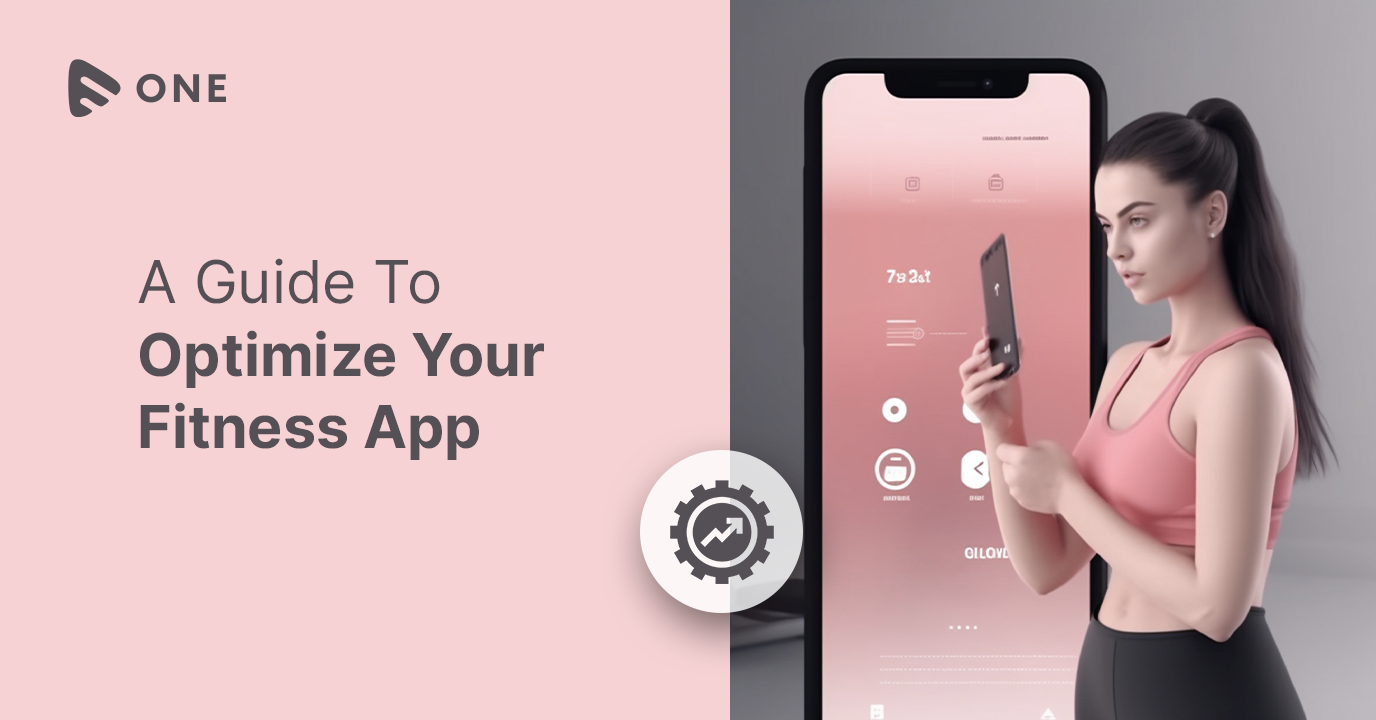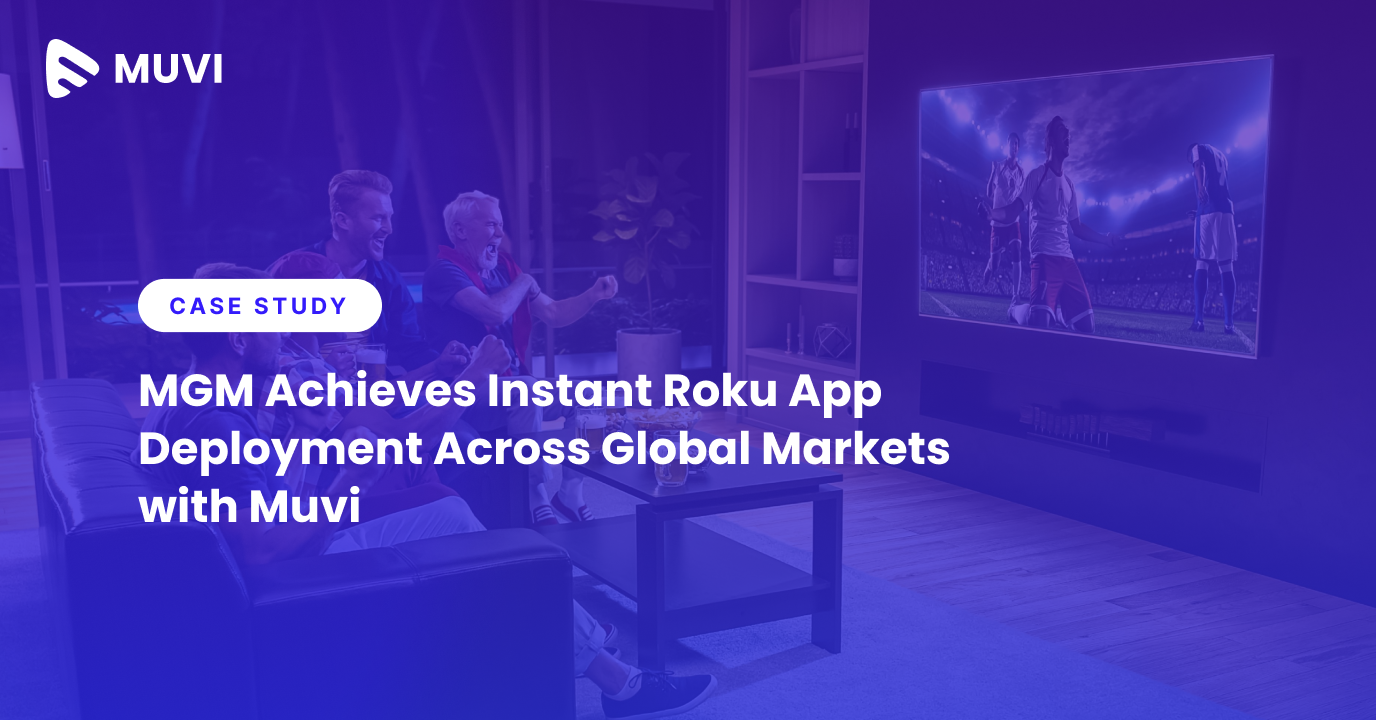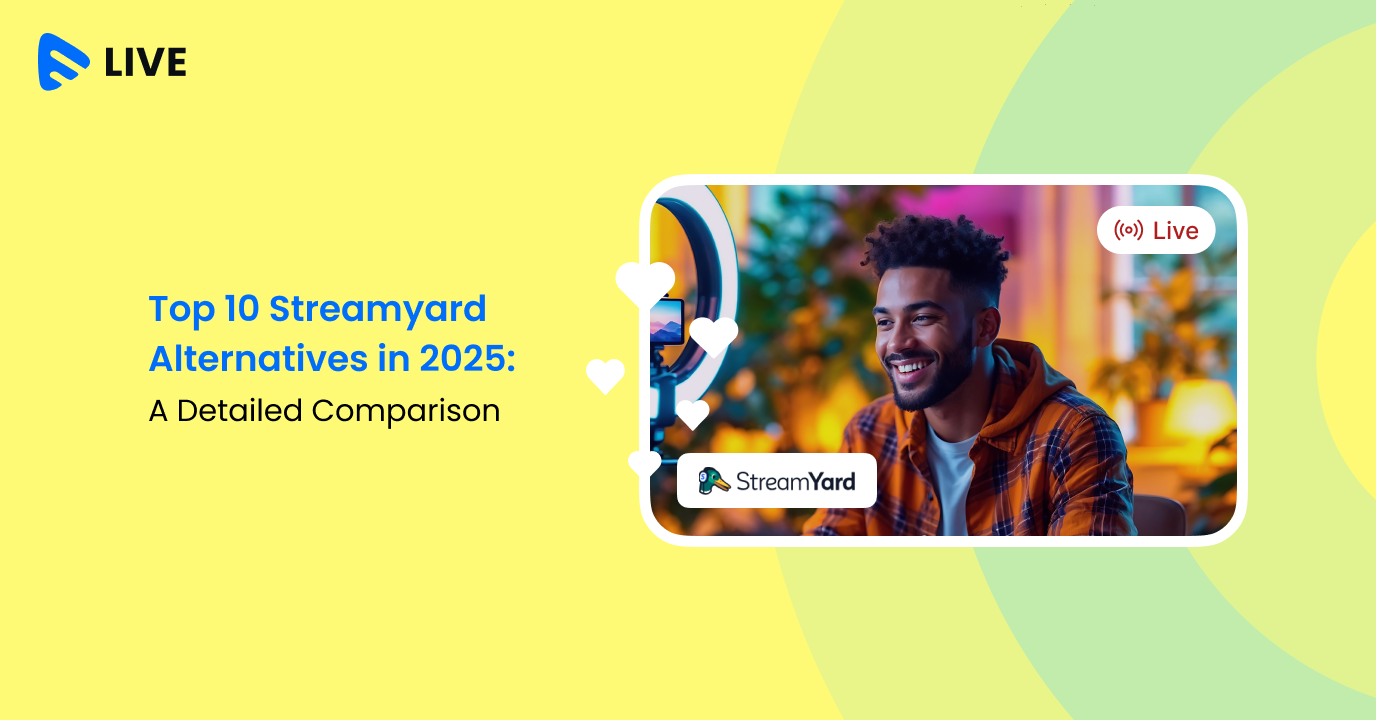Have you ever wondered what sets apart a fitness app that seamlessly integrates into users’ daily routines, inspiring consistency and results? In the increasingly competitive sector of fitness streaming, the answer lies in optimization.
The question isn’t merely about having a fitness app; it’s about having one that stands out, engages users, and delivers an unparalleled experience. Whether you’re a fitness enthusiast looking to enhance your app’s effectiveness or aiming to create a standout platform, understanding the nuances of optimization is paramount.
As the demand for fitness apps continues to surge, ensuring that your offering is not only technically robust but also user-friendly becomes a strategic necessity. From enhancing app speed and responsiveness to refining user interfaces and incorporating innovative features, this guide explores the multifaceted aspects of optimization. So, let’s get started!
Why Is It Crucial To Optimize Your Fitness App?
1. Boosts User Acquisition
In a saturated market flooded with fitness apps vying for users’ attention, the first impression often makes all the difference. Optimizing your fitness app is the key to standing out amidst the competition and capturing the interest of potential users. A well-optimized app not only functions seamlessly but also delivers a smooth onboarding experience, reducing friction for users from the moment they download the app.
The loading speed of your app is a critical factor in user acquisition. Users today expect swift responses, and a sluggish app can deter them from exploring further. By optimizing loading times, streamlining registration processes, and ensuring intuitive navigation, you create a positive initial encounter that encourages users to not only install your app but also explore its features and functionalities. Meat-free meals can be an excellent addition to your fitness journey, complementing your optimized workout routines. Keeping a balanced and nutritious diet is vital to maintain energy levels and enhance overall performance.
Moreover, optimization extends to leveraging app store optimization (ASO) techniques. Crafting compelling app descriptions, utilizing relevant keywords, and optimizing visuals contribute to higher visibility on app stores, increasing the likelihood of discovery by potential users. In a competitive landscape, being easily discoverable can significantly impact your user acquisition strategy.
2. Enhances Brand Visibility
Optimization plays a pivotal role in enhancing the visibility and credibility of your fitness app within the digital space. A well-optimized app is more likely to garner positive reviews and ratings, establishing a positive feedback loop that attracts new users and builds brand trust. Positive app store reviews not only influence potential users but also contribute to higher rankings in app store algorithms, further boosting visibility.
Beyond the app stores, the visibility of your fitness app is closely tied to its performance across various devices and platforms. Ensuring compatibility and optimal performance on different devices—be it smartphones, tablets, or wearables—expands your reach and accessibility. The more seamlessly your app functions across diverse platforms, the more likely it is to gain recognition and visibility within the broader fitness app ecosystem.
3. Drives User Engagement
Optimizing your fitness app isn’t just about acquiring users; it’s about keeping them engaged and invested in their fitness journey. A highly engaging app is more likely to retain users over the long term, fostering a dedicated user base that consistently interacts with the app’s features and content.
One crucial aspect of user engagement is content optimization. Regularly updating and diversifying your fitness app’s content—whether through new workout routines, nutritional guides, or motivational content—keeps users coming back for more. By tailoring content to users’ preferences and fitness levels, you enhance personalization, creating a more engaging and relevant experience.
Furthermore, optimization involves addressing user feedback promptly. Regularly updating the app based on user reviews and suggestions demonstrates a commitment to user satisfaction.
4. Establishes Credibility
In the crowded space of fitness apps, credibility is a currency that can set your platform apart and build trust among users. Optimization plays a pivotal role in establishing and enhancing the credibility of your fitness app. Users are more likely to trust an app that functions seamlessly, offers a flawless user experience, and consistently delivers on its promises.
A well-optimized fitness app is characterized by its reliability, quick loading times, and intuitive design. When users find an app that meets their expectations effortlessly, it fosters a sense of confidence in the app’s capabilities. Positive user experiences translate into positive reviews and word-of-mouth recommendations, further solidifying the app’s credibility.
Moreover, credibility is closely tied to the security and privacy measures implemented within the app. Ensuring robust security protocols and transparent privacy policies demonstrates a commitment to user data protection, a factor that is increasingly important to users. An optimized fitness app doesn’t just provide effective workouts; it also prioritizes the security and privacy of users, reinforcing its credibility in the eyes of a discerning audience.
5. Helps Improve Revenue Streams
Optimizing your fitness app isn’t merely about creating a polished product; it’s a strategic investment with the potential to enhance revenue streams. An optimized app attracts more users, retains them for longer durations, and creates opportunities for diverse monetization models.
Firstly, optimization contributes to user retention. When users have a positive experience with your app, they are more likely to continue using it, explore premium features, and potentially subscribe to premium plans. A seamless and engaging app experience becomes a catalyst for converting free users into paying subscribers, thereby enhancing subscription-based revenue.
Furthermore, optimization extends to advertising and promotional strategies within the app. A well-optimized fitness app provides a fertile ground for strategic placements of advertisements and promotions. By analyzing user behavior, preferences, and engagement patterns, the app can deliver targeted advertisements that resonate with users.
6. Competitive Advantages
Optimization serves as a formidable tool to secure and maintain competitive advantages over other apps vying for users’ attention. A well-optimized app not only meets but exceeds user expectations. When users compare different fitness apps, they are more likely to choose the one that offers a smoother experience, faster loading times, and a more intuitive interface. Positive reviews and high ratings resulting from optimization efforts contribute to a favorable app reputation, attracting users who prioritize quality and performance.
Moreover, optimization extends to staying ahead of technological trends and innovations. Keeping the app updated with the latest features, integrations, and functionalities positions it as a cutting-edge solution within the market. For example, incorporating emerging technologies such as augmented reality (AR) for interactive workouts or integrating wearables for enhanced tracking can provide a competitive advantage by offering users innovative and differentiated experiences.
How To Optimize Your Fitness App?
1. Interactive Workout Challenges
One of the key pillars of optimizing a fitness app is to infuse it with interactive workout challenges. Challenges inject an element of gamification, turning fitness routines into engaging and competitive experiences that captivate users. From daily step challenges to weekly workout competitions, incorporating interactive challenges motivates users to stay committed to their fitness goals.
Ensure that challenges are diverse, catering to users with varying fitness levels and preferences. Whether it’s a high-intensity interval training (HIIT) challenge, a yoga pose challenge, or a running distance challenge, offering a variety keeps users excited and engaged. Integrate leaderboards and badges to acknowledge and reward achievements, fostering a sense of accomplishment and community.
Additionally, allow users to create and participate in custom challenges, promoting social interaction within the app. A social component enhances user engagement and encourages a sense of community, turning the fitness app into a supportive and dynamic platform.
2. Personalized Fitness Plans
Users seek tailored experiences that cater to their unique fitness goals, preferences, and capabilities. Implement artificial intelligence (AI) and machine learning algorithms to analyze user data, including fitness levels, past workouts, and health information, to generate personalized fitness plans.
Ensure that the fitness plans are adaptable and progressive, evolving with users as they advance in their fitness journey. Integrate features that allow users to input their preferences, such as preferred workout durations, types of exercises, or targeted muscle groups. The more customizable and personalized the plans, the more likely users are to engage consistently.
Provide a variety of workout options within the plans, ranging from strength training and cardio to flexibility and recovery sessions. Offering diversity ensures that users can find workouts that align with their preferences and keeps their fitness routine dynamic.
Moreover, leverage real-time data and user feedback to continually refine and optimize personalized fitness plans. Regularly update plans based on user progress, preferences, and feedback, demonstrating a commitment to user-centric optimization.
3. Real-time Performance Tracking
Real-time performance tracking is crucial for optimizing a fitness app, empowering users with actionable insights into their progress. Implement tracking features that monitor key metrics such as heart rate, calories burned, distance covered, and workout duration in real time. Visualize this data through intuitive charts and graphs, providing users with a comprehensive overview of their performance.
Integrate wearables and fitness trackers for seamless synchronization, allowing users to monitor their performance beyond the app. The ability to seamlessly connect with devices enhances the user experience and ensures accuracy in performance tracking.
Gamify performance tracking by introducing challenges related to personal bests, encouraging users to surpass their own records. Celebrate milestones and achievements with notifications and virtual rewards, fostering a sense of accomplishment and motivation.
Additionally, provides users with insights into their workout intensity and areas for improvement. For example, if a user consistently struggles with a particular exercise, offer alternative variations or suggest complementary workouts to address specific fitness goals.
4. Virtual Fitness Classes
One of the key strategies for optimizing your fitness app is to introduce virtual fitness classes, providing users with an immersive and interactive workout experience. Virtual classes bring professional trainers and a sense of community directly to users’ devices, eliminating barriers like location and scheduling constraints.
Implement a variety of virtual classes spanning different fitness disciplines, from high-intensity workouts and yoga sessions to dance classes and specialized training programs. Offering a diverse range of classes caters to the varied preferences and fitness goals of your user base.
Enhance user engagement by incorporating live streaming capabilities for real-time interactions between trainers and participants. Live classes foster a sense of accountability, motivation, and camaraderie, creating a dynamic virtual fitness community within your app.
5. Nutritional Guidance Integration
Optimizing a fitness app goes beyond workouts; it involves addressing the holistic wellness journey of users. Integrating nutritional guidance directly into the app enhances its utility by providing a comprehensive approach to health and fitness.
Incorporate features that allow users to log their dietary intake, track calorie consumption, and receive personalized nutritional recommendations based on their fitness goals. Leverage machine learning algorithms to analyze user data and offer insights into their nutritional habits, helping users make informed choices.
Integrate a food database or partner with nutritional databases to simplify the process of logging meals. The more seamless and user-friendly the nutritional tracking, the more likely users are to consistently engage with this aspect of the app
6. AR-Enhanced Exercise Experience
Augmented reality (AR) represents a cutting-edge approach to optimizing the exercise experience within your fitness app. By integrating AR features, you can elevate traditional workouts into immersive and engaging experiences that captivate users.
Implement AR overlays that guide users through proper form and technique during exercises. This real-time feedback enhances the effectiveness of workouts and reduces the risk of injuries, fostering a sense of confidence among users.
Enhance user motivation by introducing AR-enhanced challenges and games within the app. Users can embark on virtual fitness quests, compete with friends in AR-driven competitions, or even simulate outdoor environments for cardio workouts. The gamification element adds a fun and dynamic layer to the exercise experience.
Consider AR-driven mirror technology that allows users to see themselves alongside virtual trainers or workout companions. This visual feedback promotes correct posture and alignment, providing users with a valuable tool for self-correction during their workouts.
7. Exclusive Fitness Wearables Sync
One key strategy for optimizing your fitness app is to offer exclusive sync capabilities with popular fitness wearables. Integrating with leading wearables enhances the accuracy of performance tracking, providing users with real-time insights into their workouts, health metrics, and overall well-being.
Collaborate with wearable manufacturers to create seamless sync features that allow users to effortlessly connect their devices to your app. This integration enables users to track their steps, monitor heart rate, analyze sleep patterns, and more—all within the app’s ecosystem.
Implement a unified dashboard that aggregates data from various wearables, offering users a comprehensive overview of their fitness journey. The more inclusive and user-friendly the sync feature, the more likely users are to embrace your app as their go-to fitness companion.
Exclusive wearables sync not only enriches the user experience but also positions your app as a technologically advanced and forward-thinking solution in the fitness tech market.
8. Celebrity Trainer Partnerships
Establishing partnerships with celebrity trainers is a powerful strategy to optimize your fitness app and attract a broad user base. Celebrity trainers bring not only their expertise but also a significant following, enhancing the app’s credibility and visibility.
Collaborate with renowned fitness personalities to create exclusive workout content, training programs, and live sessions within the app. Celebrity-endorsed content adds a level of authenticity and excitement, motivating users to engage consistently with the app.
Leverage the influence of celebrity trainers for promotional activities, social media campaigns, and app endorsements. Their endorsement can significantly impact user acquisition, bringing in new users who are drawn to the trainer’s expertise and reputation.
Ensure that the partnership goes beyond surface-level endorsements by actively involving celebrity trainers in app updates, challenges, and community engagement. A dynamic and ongoing collaboration enhances the app’s value proposition and reinforces its commitment to delivering top-tier fitness experiences.
9. Feature Renowned Fitness Coaches
Optimizing your fitness app involves curating content from a roster of renowned fitness coaches who bring diverse expertise and training styles. By featuring a variety of high-profile coaches, you cater to the diverse preferences and fitness goals of your user base.
Collaborate with coaches who specialize in different disciplines such as strength training, yoga, HIIT, and more. The variety ensures that users can access a wide range of workouts, preventing monotony and encouraging consistent engagement.
Highlight the credentials and achievements of featured coaches, providing users with insights into their expertise and training philosophy. Transparent and informative profiles contribute to the credibility of the app and build trust among users.
Implement exclusive content, training plans, and challenges led by renowned fitness coaches. Exclusive offerings create a sense of privilege for app users and attract enthusiasts who seek guidance from experts in the fitness industry.
Moreover, facilitate direct interactions between users and featured coaches through live Q&A sessions, virtual workshops, or community forums. Encouraging engagement fosters a sense of community within the app, enhancing the overall user experience.
10. User Success Stories Showcase
One impactful strategy to optimize your fitness app is to create a dedicated space for showcasing user success stories. Real-life testimonials and transformation stories serve as powerful motivators for other users, inspiring them to embark on their fitness journey with renewed determination.
Encourage users to share their achievements, progress photos, and personal narratives within the app. Implement a feature that highlights these success stories, creating a dynamic and evolving showcase accessible to all users. The more diverse the stories, covering various fitness goals and journeys, the more relatable they become to a broader audience.
Consider incorporating multimedia elements such as before-and-after photos, video testimonials, and user interviews. These elements not only add authenticity to the success stories but also provide users with tangible proof of the app’s efficacy in helping individuals achieve their fitness goals.
Additionally, leverage user success stories for promotional activities, social media campaigns, and app endorsements. Recognizing and celebrating user achievements not only motivates the individuals involved but also contributes to a positive and encouraging app culture.
11. Gamified Fitness Challenges
Gamification is a proven strategy to optimize engagement within fitness apps. By introducing gamified fitness challenges, you infuse an element of competition, fun, and achievement into the user experience.
Create diverse challenges that cater to different fitness levels, preferences, and time commitments. Whether it’s a step challenge, a monthly workout streak challenge, or a virtual race, gamified challenges provide users with tangible goals and rewards.
Implement leaderboards that showcase the top-performing users in each challenge. Public recognition and friendly competition foster a sense of community and motivate users to push their limits to climb the ranks.
Introduce virtual badges, rewards, and in-app currency that users can earn by completing challenges or achieving specific milestones. Tangible rewards provide users with a sense of accomplishment and incentivize consistent engagement.
Moreover, consider incorporating team challenges or collaborative quests, promoting a sense of camaraderie within the app. The social aspect of gamified challenges encourages users to connect, support each other, and celebrate collective victories.
12. In-App Social Networking
To optimize user engagement and create a thriving fitness community, integrate in-app social networking features. Establishing a virtual space for users to connect, share, and interact fosters a sense of belonging and accountability.
Implement user profiles with customizable information, fitness goals, and progress updates. Users can follow each other, comment on posts, and provide encouragement, creating a supportive social environment within the app.
Facilitate the creation of fitness groups or communities based on shared interests, workout preferences, or fitness challenges. Users can join these groups, participate in discussions, and even organize meet-ups or virtual events.
Enable direct messaging between users, allowing them to communicate privately, exchange tips, or coordinate joint workouts. The personal connection forged through in-app social networking enhances the overall user experience and encourages long-term app loyalty.
13. Build Fitness Communities
Communities bring users together, fostering a sense of camaraderie, motivation, and shared goals. By creating a virtual space for users to connect, interact, and support each other, you enhance the overall user experience and contribute to the long-term success of your app.
Implement community forums or discussion boards where users can share experiences, ask questions, and offer advice. These platforms facilitate user-to-user interactions, creating a support system that goes beyond the app’s functionalities.
Introduce group challenges or collaborative fitness quests that encourage users to work together towards a common goal. Group achievements and milestones contribute to a sense of collective success, fostering a positive community spirit.
Consider incorporating community leaders or moderators who can guide discussions, share valuable insights, and motivate users. These leaders can be experienced fitness enthusiasts, certified trainers, or individuals who have achieved notable success within the app.
Moreover, host virtual events such as live Q&A sessions, expert panels, or community-wide workouts. These events not only strengthen the sense of community but also provide users with opportunities to engage with fitness experts and fellow enthusiasts.
14. Seasonal Fitness Programs
Optimizing your fitness app involves keeping content fresh, relevant, and aligned with users’ changing needs and preferences. Introducing seasonal fitness programs is an effective strategy to provide users with varied and exciting workout options throughout the year.
Develop programs tailored to different seasons, incorporating activities that align with the weather, holidays, or cultural events. For example, a summer fitness program could include outdoor workouts, while a winter program might focus on indoor exercises or winter sports.
Integrate seasonal challenges that motivate users to stay active and engaged. These challenges can include specific fitness goals, themed workouts, or nutrition objectives that align with the characteristics of each season.
Offer seasonal promotions or incentives to encourage users to participate in the programs. This could include discounts on premium subscriptions, exclusive access to seasonal content, or virtual rewards tied to program completion.
Keep the content of seasonal programs dynamic and interactive. Incorporate live sessions, real-time progress tracking, and opportunities for users to share their experiences within the app’s community.
15. Localized Fitness Events
To further optimize user engagement, consider hosting localized fitness events that connect users based on their geographical location. Localized events provide a unique and personalized touch, allowing users to participate in activities that reflect their community and surroundings.
Organize virtual or in-person meet-ups, encouraging users from the same area to come together for group workouts, runs, or outdoor activities. This promotes a sense of community on a local level, fostering connections among users who may share common fitness goals and interests.
Partner with local fitness instructors, gyms, or wellness businesses to host special events or classes. This collaborative approach not only diversifies your app’s offerings but also supports local fitness professionals and businesses.
Facilitate local challenges that are specific to a particular region or city. This could involve exploring popular local trails, and landmarks, or participating in community fitness initiatives. Engaging users in activities tied to their local context enhances the relevance and appeal of your app.
Encourage users to share their local fitness experiences within the app’s community or on social media. This user-generated content not only adds a personal touch to your app but also inspires others to join local fitness events.
The Bottom Line
Undoubtedly, the imperative to optimize your platform is getting more prominent with each passing year. Striving for excellence in user experience, content diversity, and engagement is not just a pathway to success; it is a necessity to secure your position in the market and achieve your business goals. By embracing optimization, you not only meet the evolving demands of fitness enthusiasts but also stay ahead in a dynamic industry where innovation and user satisfaction are paramount.
Optimizing your fitness streaming app ensures that you not only attract new users but also retain them through personalized experiences, exclusive features, and strategic partnerships. It enables your app to stand out, offering more than just workout routines by incorporating elements that cater to the holistic well-being of users.
In this journey of optimization, Muvi One emerges as a leading OTT solution, providing a seamless avenue for launching and refining your own branded fitness app. With robust CDN capabilities ensuring lag-free streaming, SEO optimization tools enhancing discoverability, and audience engagement tools fostering a vibrant community, Muvi One stands as a comprehensive solution.
The platform’s analytics and insights empower you to make data-driven decisions, aligning your fitness app with the preferences and behaviors of your users. In the realm of fitness streaming, Muvi One is not just a tool; it’s a catalyst for success, offering the features and capabilities needed to thrive in a competitive market while delivering a top-notch user experience. Take a 14-day free trial today to get started.
















Add your comment